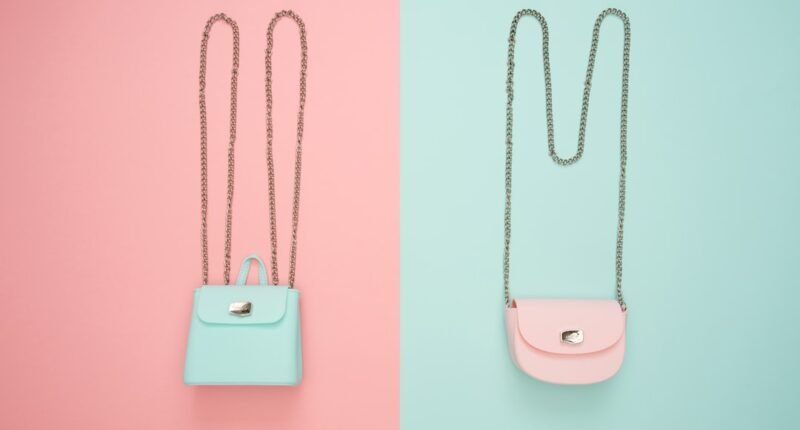Fashion design is a creative and dynamic field encompassing the creation of clothing, accessories, and footwear. This highly competitive industry demands a blend of artistic talent, technical expertise, and business acumen. Fashion designers are tasked with conceptualizing and creating designs, selecting appropriate materials, and overseeing production processes.
They work in various environments, including fashion houses, design firms, and manufacturing companies. To remain relevant, fashion designers must stay informed about current trends and industry developments, ensuring their designs resonate with consumers. The field offers numerous opportunities for creative individuals passionate about style and aesthetics.
Fashion design is a multifaceted profession requiring a diverse skill set. Beyond artistic talent and creativity, designers must possess strong technical abilities in pattern-making, sewing, and garment construction. A thorough understanding of textiles, color theory, and design principles is essential.
Additionally, fashion designers need a solid grasp of business concepts such as marketing, sales, and budgeting. Identifying market trends and consumer preferences is crucial for creating commercially viable designs. The fast-paced and demanding nature of fashion design requires dedication, perseverance, and a commitment to continuous learning and adaptation.
Despite its challenges, many individuals are drawn to this field for the opportunity to express their creativity and make a lasting impact in the world of style and fashion.
Key Takeaways
- Fashion designing is a creative and competitive industry that involves creating and producing clothing and accessories.
- Factors affecting starting fashion designer salary include education, experience, location, and the type of company or organization.
- The average starting fashion designer salary varies depending on the factors mentioned, but it typically ranges from ,000 to ,000 per year.
- The fashion design industry offers potential for growth, with opportunities to advance to higher-paying positions and work with well-known brands.
- Additional benefits and perks in fashion designing may include discounts on clothing, opportunities for travel, and the chance to work with influential people in the industry.
- Tips for negotiating a starting fashion designer salary include researching industry standards, highlighting relevant skills and experience, and being confident in discussing compensation.
- In conclusion, fashion designing can be a rewarding career with potential for growth and exciting perks, but it’s important for aspiring designers to be aware of the factors that can affect their starting salary and to negotiate effectively.
Factors Affecting Starting Fashion Designer Salary
Several factors can influence the starting salary of a fashion designer. One of the most significant factors is the level of education and training. Fashion designers with a bachelor’s degree from a reputable fashion design program may command a higher starting salary than those with only a high school diploma or an associate degree.
Additionally, relevant work experience can impact a fashion designer’s starting salary. Individuals who have completed internships or gained practical experience in the industry may be able to negotiate a higher salary than those who are just starting out. The location of the job can also affect starting salaries for fashion designers.
Designers working in major fashion capitals such as New York, Paris, or Milan may receive higher salaries than those working in smaller cities or rural areas. Furthermore, the reputation and size of the employer can play a role in determining starting salaries for fashion designers. Designers working for well-known fashion houses or luxury brands may receive more competitive compensation packages than those working for smaller, lesser-known companies.
Another factor that can impact starting salaries for fashion designers is the specific area of specialization. Designers who specialize in high-end couture or luxury fashion may command higher salaries than those who work in mass-market or ready-to-wear segments. Additionally, the demand for specific skills or expertise can influence starting salaries for fashion designers.
For example, designers with expertise in sustainable fashion or digital design may be able to negotiate higher salaries due to the growing demand for these specialized skills in the industry. Finally, economic conditions and market trends can affect starting salaries for fashion designers. During periods of economic downturn or industry disruption, starting salaries may be lower as companies tighten their budgets and reduce hiring.
Conversely, during periods of growth and innovation in the fashion industry, starting salaries may be more competitive as companies seek to attract top talent.
Average Starting Fashion Designer Salary

The average starting salary for fashion designers can vary widely depending on several factors, including education, experience, location, and area of specialization. According to the U.S. Bureau of Labor Statistics, the median annual wage for fashion designers was $73,790 as of May 2020.
However, it’s important to note that this figure represents the median wage for all fashion designers, including both experienced professionals and those just starting out in the industry. The starting salary for entry-level fashion designers is typically lower than the median wage, with many new graduates earning salaries in the range of $35,000 to $45,000 per year. In major fashion hubs such as New York City or Los Angeles, starting salaries for fashion designers may be higher due to the higher cost of living and the concentration of fashion industry opportunities.
On the other hand, starting salaries in smaller cities or rural areas may be lower due to lower living costs and fewer job opportunities. Additionally, fashion designers who specialize in niche areas such as sustainable fashion or digital design may be able to command higher starting salaries due to the demand for their specialized skills. Overall, the average starting salary for fashion designers can vary significantly based on individual circumstances and market conditions.
Potential for Growth in the Fashion Design Industry
The fashion design industry offers significant potential for growth and advancement for talented and ambitious individuals. As fashion designers gain experience and develop their skills, they may have the opportunity to take on more senior roles with increased responsibilities and higher compensation. Experienced designers may progress to positions such as creative director, design director, or head designer, where they oversee entire collections and lead design teams.
Additionally, some fashion designers choose to launch their own labels or start their own design firms, which can offer substantial financial rewards and creative freedom. Furthermore, the global nature of the fashion industry means that there are opportunities for fashion designers to work internationally and collaborate with professionals from diverse cultural backgrounds. This international exposure can broaden a designer’s perspective and open up new avenues for career growth.
With the rise of e-commerce and digital platforms, there are also opportunities for fashion designers to explore new ways of reaching consumers and engaging with audiences through online channels. Overall, the fashion design industry offers ample potential for growth and advancement for individuals who are willing to work hard, stay innovative, and seize opportunities as they arise.
Additional Benefits and Perks in Fashion Designing
In addition to competitive salaries, fashion designers may also receive a range of benefits and perks as part of their compensation packages. Many employers offer health insurance, retirement plans, and paid time off as standard benefits for full-time employees. Some companies may also provide additional perks such as gym memberships, wellness programs, or flexible work arrangements to support their employees’ well-being.
Furthermore, fashion designers working for established brands or luxury houses may have access to employee discounts on clothing and accessories from their own collections or from partner brands. Another potential benefit for fashion designers is the opportunity to travel for work-related purposes such as attending fashion shows, sourcing materials, or collaborating with international suppliers. Travel can provide valuable exposure to different cultures and design influences, as well as networking opportunities with industry professionals from around the world.
Additionally, some employers may offer performance-based bonuses or profit-sharing arrangements to reward exceptional work and incentivize high performance. Overall, the benefits and perks available to fashion designers can enhance their overall compensation package and contribute to a rewarding work experience.
Tips for Negotiating a Starting Fashion Designer Salary

Negotiating a starting salary as a fashion designer can be a daunting task, but with careful preparation and strategic approach, it is possible to secure a competitive compensation package. One key tip for negotiating a starting salary is to research industry standards and salary benchmarks for similar roles in your area of specialization and geographic location. Understanding the market value of your skills and experience can provide leverage during negotiations and help you make a compelling case for your desired salary.
Another important tip is to highlight your unique skills, accomplishments, and contributions that set you apart from other candidates. Whether it’s your proficiency in digital design software, your successful internships at prestigious fashion houses, or your innovative portfolio showcasing your original designs, emphasizing your value proposition can strengthen your position during salary discussions. Additionally, it’s crucial to communicate your long-term commitment to the role and your enthusiasm for contributing to the success of the company.
Employers are more likely to invest in candidates who demonstrate dedication and passion for their work. Furthermore, it’s essential to approach salary negotiations with professionalism and confidence while remaining open to compromise. Clearly articulating your salary expectations and being prepared to justify your rationale can demonstrate your professionalism and preparedness.
At the same time, being open to discussing other aspects of the compensation package such as benefits, bonuses, or professional development opportunities can show flexibility and a collaborative mindset. Ultimately, successful salary negotiations require a balance of assertiveness, diplomacy, and strategic thinking to achieve a mutually beneficial outcome.
Conclusion and Final Thoughts
Fashion designing is an exciting and dynamic field that offers numerous opportunities for creative individuals with a passion for style and aesthetics. While starting salaries for fashion designers can vary based on factors such as education, experience, location, and area of specialization, there is significant potential for growth and advancement in the industry. In addition to competitive salaries, fashion designers may also receive a range of benefits and perks as part of their compensation packages.
Negotiating a starting salary as a fashion designer requires careful preparation, research, and strategic communication skills. By understanding industry standards, highlighting unique skills and accomplishments, and approaching negotiations with professionalism and confidence, aspiring fashion designers can position themselves for success in securing a competitive compensation package. In conclusion, while the journey to establishing oneself as a successful fashion designer may be challenging, it is also filled with opportunities for growth, creativity, and fulfillment.
With dedication, perseverance, and strategic negotiation skills, aspiring fashion designers can embark on a rewarding career path in this vibrant and ever-evolving industry.
FAQs
What is the average starting salary for a fashion designer?
The average starting salary for a fashion designer is around $35,000 to $40,000 per year.
What factors can affect a fashion designer’s starting salary?
Factors that can affect a fashion designer’s starting salary include the location of the job, the designer’s level of education and experience, the size and reputation of the company, and the specific industry within fashion (e.g. apparel, accessories, or footwear).
Are there opportunities for fashion designers to increase their salary over time?
Yes, fashion designers can increase their salary over time by gaining experience, developing a strong portfolio, and taking on more responsibilities within their role. They may also have the opportunity to move into higher-paying positions such as senior designer or creative director.
What are some potential career paths for fashion designers to pursue higher salaries?
Fashion designers can pursue higher salaries by specializing in a specific area of design (e.g. menswear, womenswear, or children’s clothing), working for high-end or luxury brands, or starting their own successful fashion label. They may also consider transitioning into related roles such as fashion buyer, fashion merchandiser, or fashion marketing manager.





